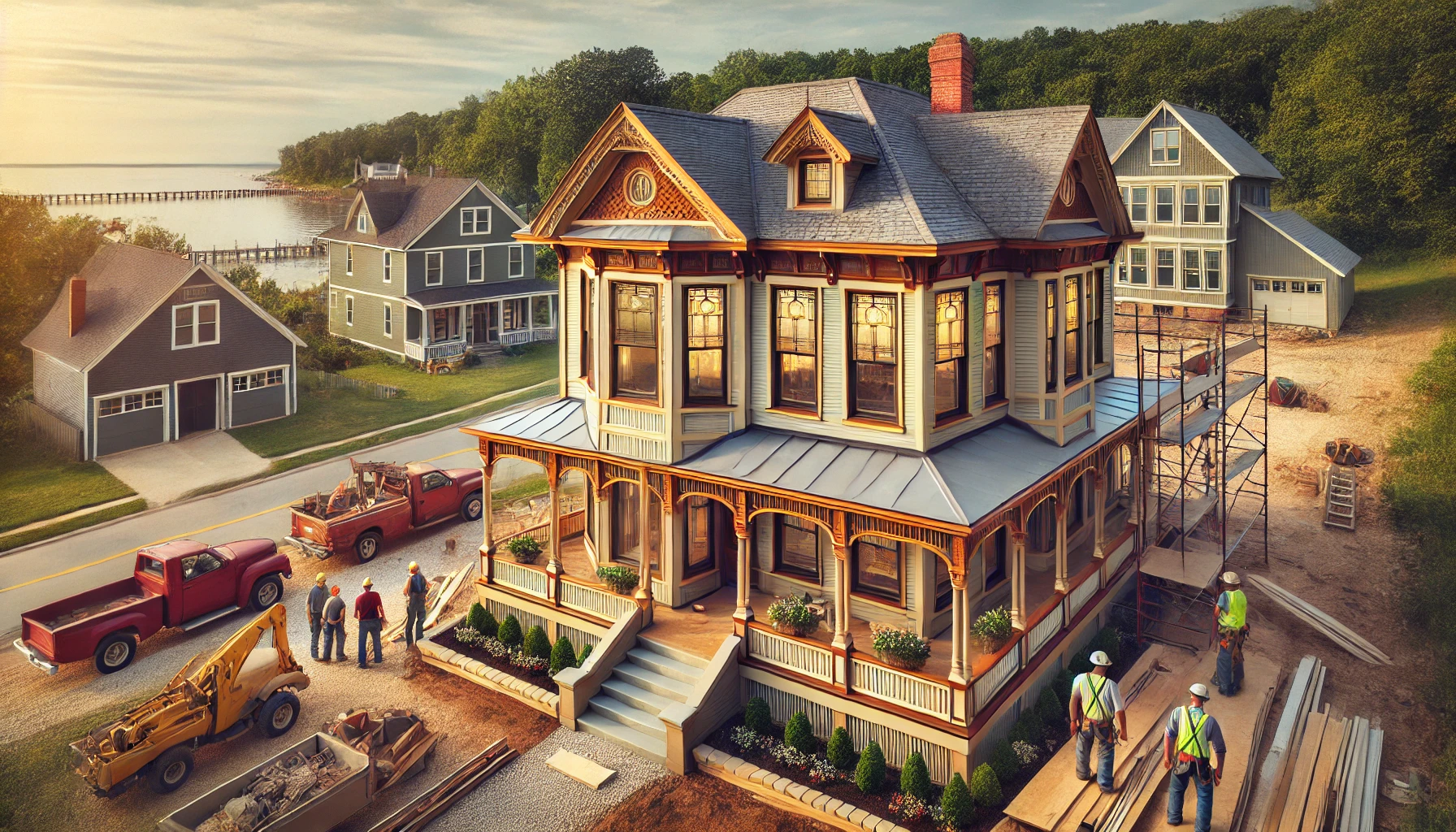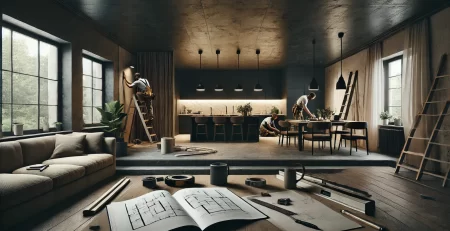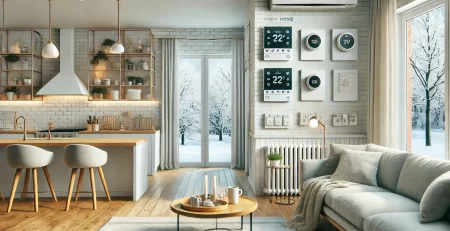Turning Old to Gold: Revitalizing Michigan Homes with Historic Charm
Michigan, with its rich history, boasts many charming older homes, each telling a story of a bygone era. However, these homes often require significant attention and care to retain their historical charm while accommodating modern needs. Renovating a historic home requires a delicate balance between maintaining its original character and upgrading it with contemporary conveniences. In this guide, we explore how to revitalize Michigan homes by blending old-world appeal with modern comfort.
Why Renovate Historic Homes in Michigan?
Michigan is home to numerous historic neighborhoods and vintage homes, each offering unique architectural beauty. From quaint cottages in Traverse City to grand estates in Detroit, these properties hold significant value in terms of history and aesthetic appeal. Restoring and renovating these homes not only preserves the state’s architectural legacy but also provides homeowners with a one-of-a-kind living space that combines history with modern amenities.
Renovating older homes offers several advantages:
- Historical Significance: Preserving architectural integrity helps maintain the neighborhood’s charm and character.
- Sustainability: By reusing and restoring existing materials, homeowners contribute to sustainability efforts and reduce waste.
- Increased Property Value: Well-executed home renovations can significantly increase the property’s value, especially in historic districts.
However, the key to a successful renovation lies in maintaining the balance between preserving the home’s historic charm and incorporating modern conveniences that enhance everyday living.
Steps for Renovating Michigan Homes While Preserving Their Historical Charm
1. Preserve Architectural Details
When renovating an older home in Michigan, one of the first priorities should be to preserve its original architectural details. From intricate crown moldings to period-specific windows and doors, these features are what give the home its historical character. If any parts of the home are in poor condition, restoration experts can help repair or recreate these elements.
- Windows and Doors: Often, the original windows in historic homes are a standout feature. Restoring old windows may require replacing the glass or adding weather stripping to improve insulation without compromising the original look.
- Fireplaces and Mantels: Many older homes in Michigan have beautiful fireplaces that can be restored or cleaned. A fresh coat of paint on the mantel or repairing any damage can make a huge difference.
- Woodwork and Flooring: Woodwork and flooring can be refinished to bring back their natural beauty. Restoring original hardwood floors can bring warmth and authenticity to a space.
2. Upgrade Systems with Modern Comforts
While historical homes are often beloved for their character, they may fall short when it comes to modern comforts like heating, cooling, plumbing, and electrical systems. Modernizing these systems ensures the home is functional, safe, and energy-efficient while maintaining its historical beauty.
- Heating and Cooling: Many older homes in Michigan have inefficient heating systems, which can be expensive to run. Installing a modern HVAC system that fits the home’s layout can significantly improve comfort levels. In some cases, ductless mini-split systems or high-efficiency furnaces can be installed without compromising the home’s aesthetic appeal.
- Plumbing: Replacing outdated pipes and fixtures with modern ones can help avoid costly repairs down the road. Consider installing low-flow faucets and showerheads to make the home more energy-efficient.
- Electrical Systems: Many older homes in Michigan were built before the demand for electricity was as high as it is today. Outdated electrical panels, outlets, and wiring can be dangerous. Upgrading these systems ensures the home complies with modern safety standards and can support today’s technology needs.
3. Incorporate Energy-Efficient Upgrades
Energy efficiency is a key consideration for any renovation project. Older homes in Michigan may have inadequate insulation or inefficient windows, leading to higher energy costs. Retrofitting the home with modern insulation, energy-efficient windows, and eco-friendly materials can reduce energy consumption and lower utility bills.
- Insulation: Insulating walls, attics, and basements can keep the home warm in the winter and cool in the summer. Spray foam insulation, cellulose, and fiberglass batts are all great options that won’t compromise the historic structure.
- Windows: Installing energy-efficient, double-paned windows can improve the home’s insulation without detracting from its appearance. For historical accuracy, you can opt for windows that mimic the design and style of the original ones.
- Solar Panels: Installing solar panels on the roof can help power the home sustainably. Solar energy is an increasingly popular choice for homeowners looking to reduce their environmental footprint while saving on energy costs.
4. Modernize Kitchens and Bathrooms
Kitchens and bathrooms are essential spaces that benefit greatly from modernization. However, when renovating these areas in an older home, it’s important to strike a balance between functionality and aesthetics. Modern appliances, cabinetry, and fixtures can be installed while respecting the home’s historical style.
- Kitchens: Consider incorporating vintage-inspired cabinetry and tile work that reflects the home’s era but with modern functionality. High-end appliances can be seamlessly integrated into the design to offer the latest technology without sacrificing the kitchen’s charm.
- Bathrooms: Bathrooms are often one of the most-used spaces in a home, making them a priority for renovation. Retaining the original tiles, sinks, and bathtubs can provide the space with historical appeal, while adding modern fixtures, lighting, and ventilation can make it more comfortable and functional.
5. Open Up Space Without Losing Character
Many older homes have smaller rooms and closed-off floor plans that don’t suit modern lifestyles. However, when opening up these spaces, it’s important to maintain the structural integrity and historical significance of the home.
- Open Floor Plans: If possible, consider removing non-load-bearing walls to create an open-concept kitchen and living space. Retain original features like exposed beams or moldings to keep the space feeling connected to the past.
- Attics and Basements: Many older homes have unfinished basements or attics that can be transformed into livable spaces. With the right design, these areas can be converted into functional spaces like home offices, guest bedrooms, or entertainment rooms, all while preserving their historic charm.
6. Select Period-Appropriate Fixtures and Furnishings
One of the most important aspects of renovating a historic home is choosing the right fixtures and furnishings. Lighting, hardware, and even wall finishes can contribute to the historical atmosphere.
- Lighting: Vintage chandeliers, sconces, and pendant lights can add a touch of old-world charm while providing ample light for modern needs.
- Hardware: Brass, copper, and cast-iron hardware are perfect choices for doors, windows, and cabinets, as they reflect the style of the home’s period.
- Wall Treatments: Using wallpaper or decorative wall treatments that match the historical style can help maintain the home’s vintage appeal.
Affordable Home Remodeling in Michigan
While historic home renovations can be expensive, there are ways to ensure your project stays within budget. Prioritize key areas that need immediate attention, such as the foundation, electrical systems, and plumbing, and focus on restoring original features where possible. Working with a reputable contractor experienced in historical renovations can help you find affordable solutions that don’t compromise on quality.
Additionally, local preservation grants and tax incentives may be available to homeowners who restore historic properties in Michigan. These programs can help offset renovation costs and encourage the preservation of historic buildings.
Choosing the Best Home Remodeling Contractors in Michigan
When undertaking a historic home renovation, working with the best home remodeling Michigan contractors is essential. Look for contractors who have experience with older homes and are familiar with the materials and techniques used in historic renovations. A skilled contractor will not only preserve the integrity of your home but also help you incorporate modern features that improve comfort and energy efficiency.
Conclusion
Revitalizing an older home in Michigan is a rewarding and exciting endeavor. By carefully preserving the home’s historical charm while integrating modern conveniences, you can create a living space that reflects both the past and the present. Whether you’re upgrading the kitchen, restoring original woodwork, or modernizing electrical systems, the key is to maintain the balance between preserving history and enhancing the functionality of your home. With thoughtful planning and skilled craftsmanship, you can turn your old Michigan home into a timeless masterpiece.












Leave a Reply